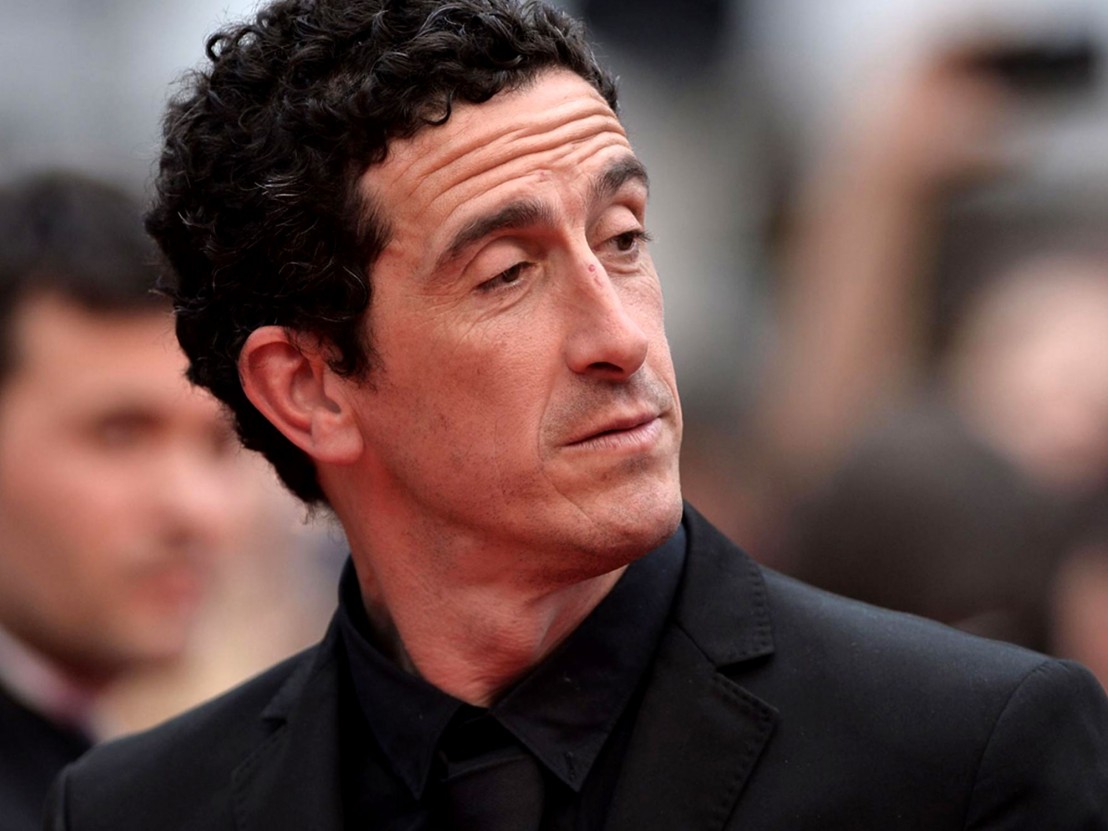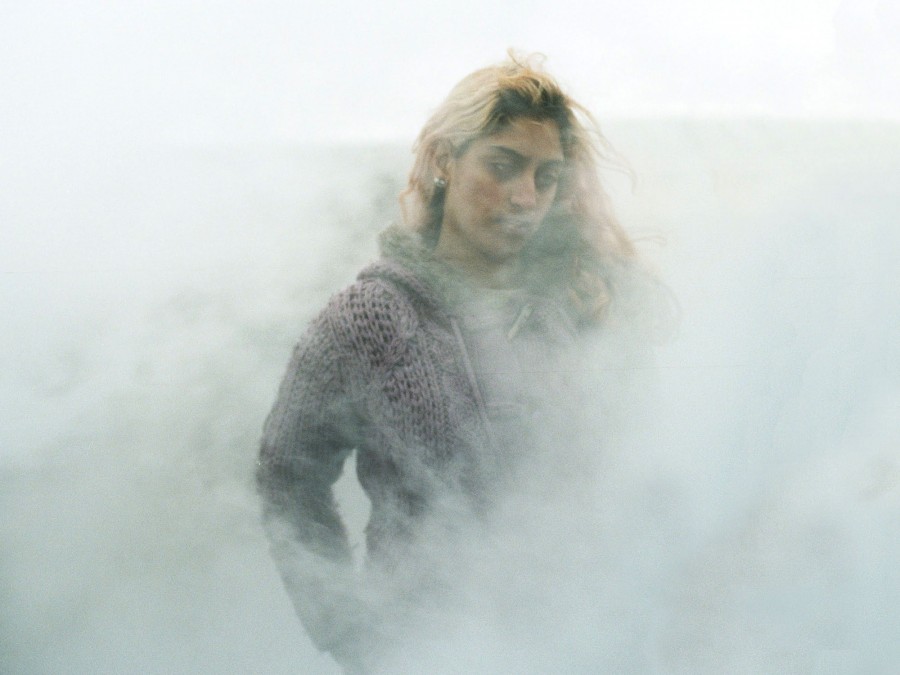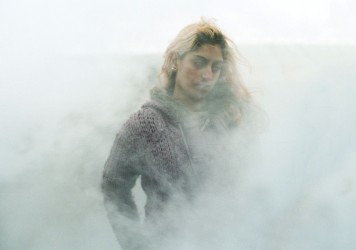
We met with the ace Irish cinematographer Robbie Ryan who, while promoting the home entertainment release of Matthew and Daniel Wolfe’s British chase thriller, Catch Me Daddy, spoke on a wide range of topics, including his work (past and future) with Andrea Arnold, his favourite directors and films, why he’s not so hot on Terrence Malick’s latest cinematic phase, and a big project he’s got lined up for the later part of 2015.
LWLies: I’ve read that people who love shooting on 35mm can do it for cheap and can make the economics work.
Robbie Ryan: Well you’ve got someone like Christopher Nolan is coming from a bigger production level. I’m a bloke who has a camera and I can film something on the weekend with my mate for next to nothing. When you were making short films on film, you had to invest in it. I’m all for Christopher Nolan being a good ambassador for film. Thank god, as the studios don’t care. They’re ruthless. They’d prefer it goes away. It’s an ongoing conversation though. People like Daniel and Matthew Wolfe who made Catch Me Daddy – Daniel says that digital video is his Kryptonite. It kills him. He can’t do it. He hates it. He feels there’s no ways past the argument that film will always look better than digital. He will always shoot on film.
When advocates for digital talk about it, they always claim it looks as good as film. It’s not a case of looking better or the same – they’re different things. It’s a quality.
I watch a lot of trailers for films. I actually watch more trailers than I do completed films! I find sometimes that technology has made things easier to film. And some stuff feels more lazy. I’m all for natural light, but some of these things are lit badly. They’re attuning to the new levels of sensitivity that some of these cameras have. It’s a saturated market though. A lot of new shit coming out. Every film festival has ten or 20 premieres and it’s like whoa.
What do you mean by badly lit?
Exteriors, they’ve gone for the sodium stream light thing. One of my all time favourites is Cassavetes, and he shot in totally natural light. I think it was his production designer who would shoot – there was never a cinematographer. I think there’s such beautiful imagery there. Back in those times, the nature of studio filming had more impetus put on the lighting. It’s a fashionable thing. Only because I’m looking back and seeing a lot of films that I would probably do – hand held, no lights – that these new ones all look a bit sloppy. Your Roman Polanski films of the ’70s – it always comes back to the ’70s – just look kinda beautiful and I don’t know why. I’m not sure what it is. I watched the trailer for a film called Truth which looks like Network. But it actually “looks” like it could almost be a TV movie. That’s the problem: there’s a crossover with TV becoming the place for interesting, forward thinking, challenging storylines, but this crossover is happening visually too. I don’t think the visual sensibilities of cinema can cross over into cinema.
Have you ever had to suppress your style to make a shot work better on TV?
Not so much. The BBC had some crazy technical thing which said you weren’t allowed to shoot on 16mm at all. The grain level means that the amount of information on the screen is too much for the BBC to handle. They just wanted everything to be shot digitally. It’s a weird one, because sometimes you watch something that’s beautifully lit and well done, but you don’t get anything from it. One of the last films I watched which I loved was Hard To be a God. The cinematography in that is incredible. I’ve been in some tough shoots, but that makes those look like a walk in the park. It’s like an art piece in a way. I loved that film Leviathan too – not the Russian one, the ethnographic one. My favourite film of late, though, is Charlie Kaufman’s Anomalisa. It’s phenomenal.
On Catch Me Daddy, did you have any allowance for spontaneity?
Yeah, what happened on that was that Matthew and Daniel created this huge bible. It was a 400 page manuscript of locations, storyboards and reference photographs. We had the plan, then we’d go off on tangents. But they really do go for whatever occurrence happens in front of the camera. There’s room for spontaneity.
How do you work with actors?
Respectfully! I always respect someone in front of the camera. You may end up doing an intimate scene, so you have to be ready for that. I need to find out if the actor is up for a laugh and if they “get it”. They confide in you sometimes. Because I’m on hand-held, it’s a bit like a dance. You move around with them. I remember one actor, I was shooting his foot, and then I tilted up and shot his face and he wasn’t ready for that. “I didn’t know it was going to be total football, Robbie!” he said. I really enjoy working with actors. That’s the buzz for me.

Is working with non-actors a better fit for the stuff you do?
What I find is that the actors who are more established have to readjust to my style, where a non-actor doesn’t have to adjust to anything. There’s a more documentary feel to things. Andrea [Arnold] would call it a poetic realism. You’re trying to be lyrical with something that’s real. Ken Loach also uses a lot of non-actors. That almost awkwardness feels more real than any great actor pretending to be like that. Sameena Ahmed in Catch Me Daddy is the perfect casting. What’s really enjoyable about that is that the character is really her. It brings the film up to another level. If you’re a pro, you’re only really as good as your last film. It’s a difficult place to be. Michael Fassbender is great at choosing good films, for example.
Did you see Steve Jobs?
Ha ha, no. I saw the trailer. I’ve heard it’s very good, but he does sound a bit like Kermit the Frog in it. He’s an amazing mimic. He loves it. He does a really funny Terrence Malick impression. He had me in stitches with that one.
Has he worked with Malick?
Yeah, he did that film Knight of Cups. No, no… it’s the next one. It’s set at a music festival in Austin. It hasn’t come out yet. I’m not sure what it’s called.
At one point it was called Weightless.
I don’t know what’s going on there because Knight of Cups came out in Berlin, but I haven’t heard anything since then. Apparently To The Wonder, Knight of Cups and this new one came from a single 500-page script. A massive thing.
I loved Knight of Cups.
Oh right. I wasn’t so keen on To The Wonder.
I loved that too.
I call that one “Makes You Wonder”. Each to their own, eh! I think he’s in dangerous territory. All the things he’s revered for, he’s unconsciously making a mockery of.
You must revere Emmanuel Lubezki?
Yeah, I mean he’s on another level. He’s in another dimension. I don’t know how he does what he does. In an oversaturated visual medium, he’s doing it really well. It’s all wide lenses with no lights.
I hear they don’t do rehearsals. They’re just filming stuff intuitively.
I was working with a location guy who worked with Malick on this new one with Fassbender. He said they had four different apartment tower block locations that were good for light at different times of the day. So they’d see that the light was good in one place, so they’d all pack over and head that way. Then they’d see that there was better light at one of the other blocks, so they’d all jump in the lift and head over there. When you hear about that attention to detail, you can’t help but admire it. But To The Wonder did push me over the edge a bit.
Red Road was the movie where you first came into your own. How has your working relationship with Andrea Arnold changed over the years?
This new film we’ve made, American Honey, is exactly the same as everything we’ve done. It’s the same approach, different landscape. She knows how she wants her films to feel. That hasn’t changed since Red Road. The only thing that has changed is the type of story she’s done. That was a collaboration with Zentropa to make a story about a specific set of characters. American Honey is basically Andrea’s musings on life in a similar way to Fish Tank. The story tells a bigger story, if you get me? Her writing is the key to her filmmaking. It’s a gelling of a lot of things for her. She spends too much time writing and not enough time out there directing. She loves the process of directing. With her, spontaneity is the key. The film is all about a road trip in a van and we didn’t know what was coming next. She even said to me, ‘Yeah, even for me this was a bigger challenge than I was expecting’. We always laughed every day. I hope the film’s got something about it that’s unusual. You never know.
Is this more of an American film, or is it a British film in America?
I don’t know. I’d be interesting to see whether that comes up when the film is released. What if she went to shoot in France? Culturally, Britain is more connected to America than anywhere else. It wasn’t as big a jump as you might think. People are making a big deal of Andrea going to America. She read a story she was interested in and she wanted to make a film. It happens to be based in the US.
You make all these features, but you also make an incredible amount of shorts. How do you find the time?
I know. I just did one at the weekend. It’s very, very difficult place for a young filmmaker to get their first film made. There’s a lot of pressure. From a collaborative point of view, how do I know if I’m going to get on with this filmmaker if I haven’t work with them before? So best thing is to do a short. I did music videos with Matthew and Daniel Wolfe and I got an idea of how we could work together. I worked with Andrea on shorts before Red Road. Did a short with John Maclean before Slow West. Tom Harper too. Most people I’ve worked with, I’ve likely got with them through a short. And I enjoy them. It’s an amazing buzz. You feel beaten up after three days on a short film, but you feel really satisfied too. On a feature, you feel beaten up after six weeks. I just can’t do that many features per year. I’ll be doing three this year. That’s enough.
Are you off to do another one before the end of the year?
Yeah I’m going to do a film up in Newcastle this October with Ken Loach.
Is it a fiction film?
Well, yeah, I can’t really say at the moment. It’s a little on the QT. I’m also doing a movie which I co-produced. I bought the option on this book called I Am Not a Serial Killer and it’s a youth-orientated thriller. A friend of mind, Billy O’Brien, is the director on it. We’ve been making it over five years. We shot it just before Andrea’s film in Minnesota. And it’s just nearing its final edit. It’s exciting to be involved on that level, like giving notes on the final cut, which is something I’ve never done before.
And why didn’t you want to direct?
It’s too much. Billy spend five years sitting there, biting his nails, wondering if his film will get made. He spent a lot of time waiting and not getting any work. From a cinematographer’s point of view, you can work all the time. If you want to. And if you’re lucky.
Catch Me Daddy is on DVD and Blu-ray now.
Published 29 Sep 2015

Steven Spielberg, Nicolas Winding Refn and Jim Jarmusch are among those with new films at the 69th Cannes Film Festival.

Sameena Jabeen Ahmed is a revelation as the lead in this smart debut feature by Daniel Wolfe.

Could Pedro Almodòvar, the Dardennes brothers and Nicolas Winding Refn be in contention for the Palme d’Or this year?